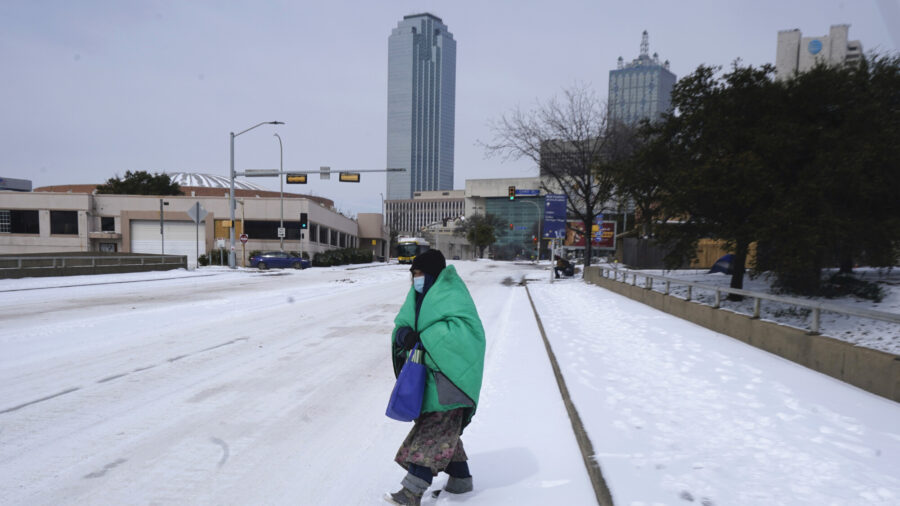President Joe Biden has approved a major disaster declaration for Texas after a brutal cold snap and frozen infrastructure brought days of power and water shortages for residents across the state.
The White House announced on Saturday that the president has also ordered federal assistance to supplement state and local recovery efforts to assist those affected. Types of assistance include temporary housing and home repairs, low-cost loans to cover uninsured property losses, and other programs to help individuals and business owners recover from the effects of the disaster.
This comes after Gov. Greg Abbott requested the declaration and assistance on Thursday. The Texas governor said in a statement that Biden’s action only “partially” assists individuals in the state as Biden had only approved “individual assistance” for 77 counties instead of the 254 counties requested by Abbott.
Biden’s declaration does however provide federal funding on the grounds of “public assistance,” which is through emergency protective measures, in all 254 counties.
“I thank President Biden for his assistance as we respond to impacts of winter weather across our state,” Abbott said in his statement.
“While this partial approval is an important first step, Texas will continue to work with our federal partners to ensure all eligible Texans have access to the relief they need. The funds provided under the Major Disaster Declaration may provide crucial assistance to Texans as they begin to repair their homes and address property damage.”
Texas has a generating capacity of about 67,000 megawatts in the winter compared with a peak capacity of about 86,000 megawatts in the summer. The gap between the winter and summer supply reflects power plants going offline for maintenance during months when demand is typically less intense and there’s not as much energy coming from wind and solar sources.
But planning this winter didn’t factor in temperatures cold enough to freeze natural gas supply lines and stop wind turbines from spinning. By Feb. 17, 46,000 megawatts of power were offline statewide—28,000 from natural gas, coal, and nuclear plants and 18,000 from wind and solar, according to the Electric Reliability Council of Texas, which operates the state’s power grid. Over the past decade, wind-generated power has gradually increased to overtake coal-generated power.
The storms triggered rolling blackouts across the state leaving more than 4 million Texans without power. Meanwhile, a lack of power in water treatment facilities led to a water boil advisory for around 7 million Texans.
The Electric Reliability Council of Texas (ERCOT), which manages the Lone Star state’s electrical system, said on Feb. 20 that “operations have returned to normal” and that they were “no longer asking for energy conservation.”
Bill Magness, ERCOT president and CEO, said on a conference call Friday that, “We just got the notice from our control room that we have left the last stage of emergency operations, so we are completely back to normal operations.”
At around 6:24 p.m. on Saturday, Texas’ power grid was operating at a capacity of around 60,000 megawatts, plus an operating reserve of 7,572 megawatts, according to ERCOT‘s dashboards. At the same time, demand was running at 36,636 megawatts.
Jason Isaac, a former state representative and current director of Life: Powered, a project of the Texas Public Policy Foundation, told The Epoch Times’ “American Thought Leaders” that the power crisis has sparked the need for reform, in particular, developing better winterization measures and improving management.
“There is some winterization that’s needed. And that’ll certainly take place, that will happen,” he said. “Absolutely, when these power plants were tripped offline, and not being utilized, you have parts that aren’t moving, and those parts will freeze up.”
Isaac said although some targeted reform needs to take place to improve the grid’s preparedness for future events, he expressed disapproval over a federal integration of Texas’s power system.
“We’re an independent state and we like our Texas independence,” he said. “And the last thing we want to do is have our grid controlled by any kind of federal regulatory agency or the federal government,” he added.
The Associated Press and Tom Ozimek contributed to this report.
From The Epoch Times

